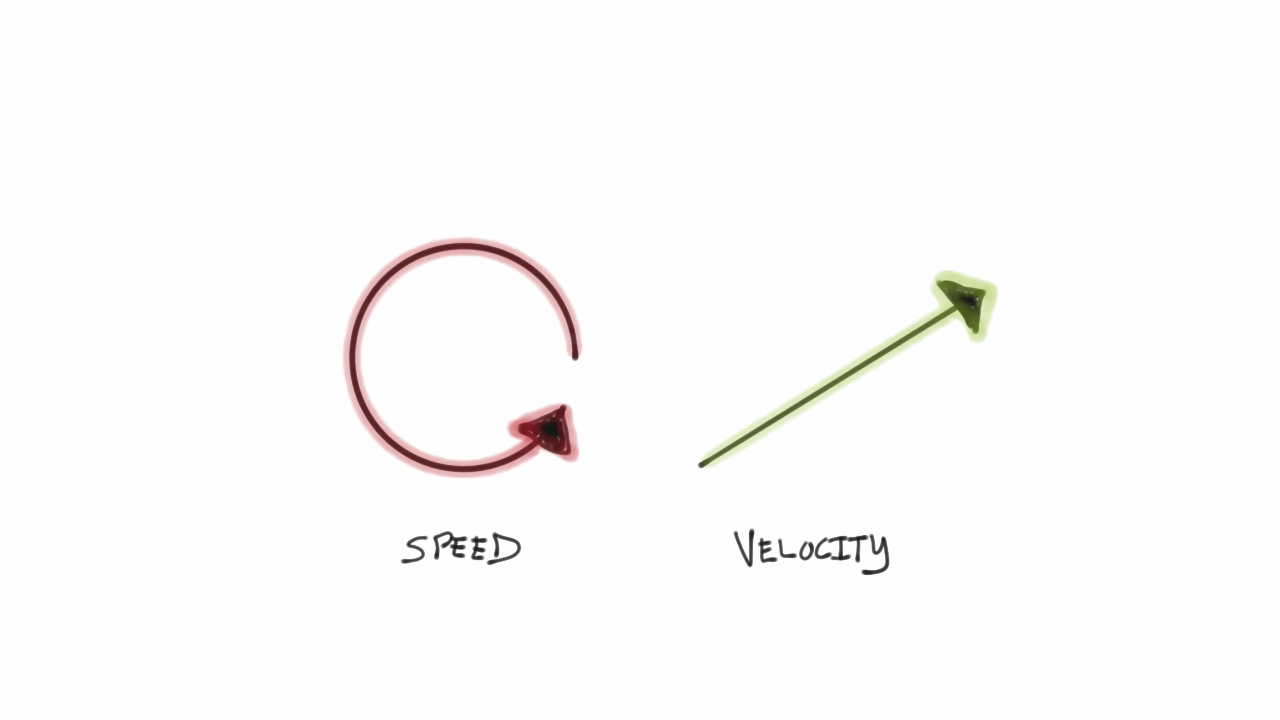Most people think going fast and getting stuff done are the same. They are not.
Understanding the difference between speed and velocity can help increase your productivity, simplify your focus, and improve your results.

Progress Drives Results
Let’s begin with the difference between velocity and speed. Don’t worry, we’re not in physics class here.
Velocity and speed are different things. Speed is the distance traveled over time. Velocity measures displacement. It’s direction-aware.
The important distinction is that velocity has both speed and direction.
Velocity moves you toward a goal. Speed does not. If you are in a race and you run in a circle, you might move with a lot of speed, but you’re not closer to your destination.
Progress matters more than movement.
People think focus means saying yes to the thing you’ve got to focus on. But that’s not what it means at all. It means saying no to the hundred other good ideas that there are. You have to pick carefully. I’m actually as proud of the things we haven’t done as the things I have done. Innovation is saying ‘no’ to 1,000 things.
steve jobs
How do we think about velocity when it comes to work?
Focus impacts velocity. Right now, you might have 5 different projects you’re working on at work. Assuming you have 5 usable hours each day, each project gets one hour per day. Because you have so many different projects, you feel really busy (speed), but you’re not making as much progress as you want (velocity). If you cut your projects back to 3, you’ll not only increase the velocity on those 3, but you’ll find that your 5 hours of time becomes 6 as you spend less time ‘getting up to speed.’
If you want to get stuff done, progress matters, not speed.
Progress is velocity in the right direction.
In order to make progress, you need to do two things: 1) get the direction right and 2) concentrate as much energy as you can in that direction. All of the energy that doesn’t go toward moving you in the right direction comes at the expense of progress.
The difference between successful people and very successful people is that very successful people say ‘no’ to almost everything.
Warren Buffett
Here are three ways you can increase your velocity:
- To the extent possible, ruthlessly shave away the unnecessary tasks, priorities, meetings, and BS. Put all your effort into the projects that really matter.
- Don’t rely on your willpower to say no; instead, create systems that help you fend off distractions. I have two friends who were about the same weight several years ago. Around that time, one of them was diagnosed with celiac (gluten intolerance). He immediately started to lose weight after changing his diet. Upon seeing this, my other friend decided that he, too, would go on a diet to lose weight. Because they both ate out a lot, they both were frequently in situations where they would have to make healthy choices. The person with celiac developed “automatic behavior“; he had to avoid gluten if he wanted to stay healthy and pain-free. The other person, however, had to keep making positive choices and ended up falling down after a few weeks and reverting to his previous eating habits. Another example: One of my management principles was “no meeting mornings.” This rule allowed the team to work, uninterrupted, on the most important things. Of course, there were exceptions to this rule, but the default was that each day you had a three-hour chunk of time when you were at your best to really move the needle.
- And finally, do as I did, and say “no” to your boss. The best way I found to frame this reply was actually the same technique that negotiation expert Chris Voss mentioned in a recent podcast episode: simply ask, “how am I supposed to do that?” given all the other stuff on your plate. Explain that saying no means that you’re going to be better at the tasks that are most important to your job, and tie those tasks to your boss’s performance.
